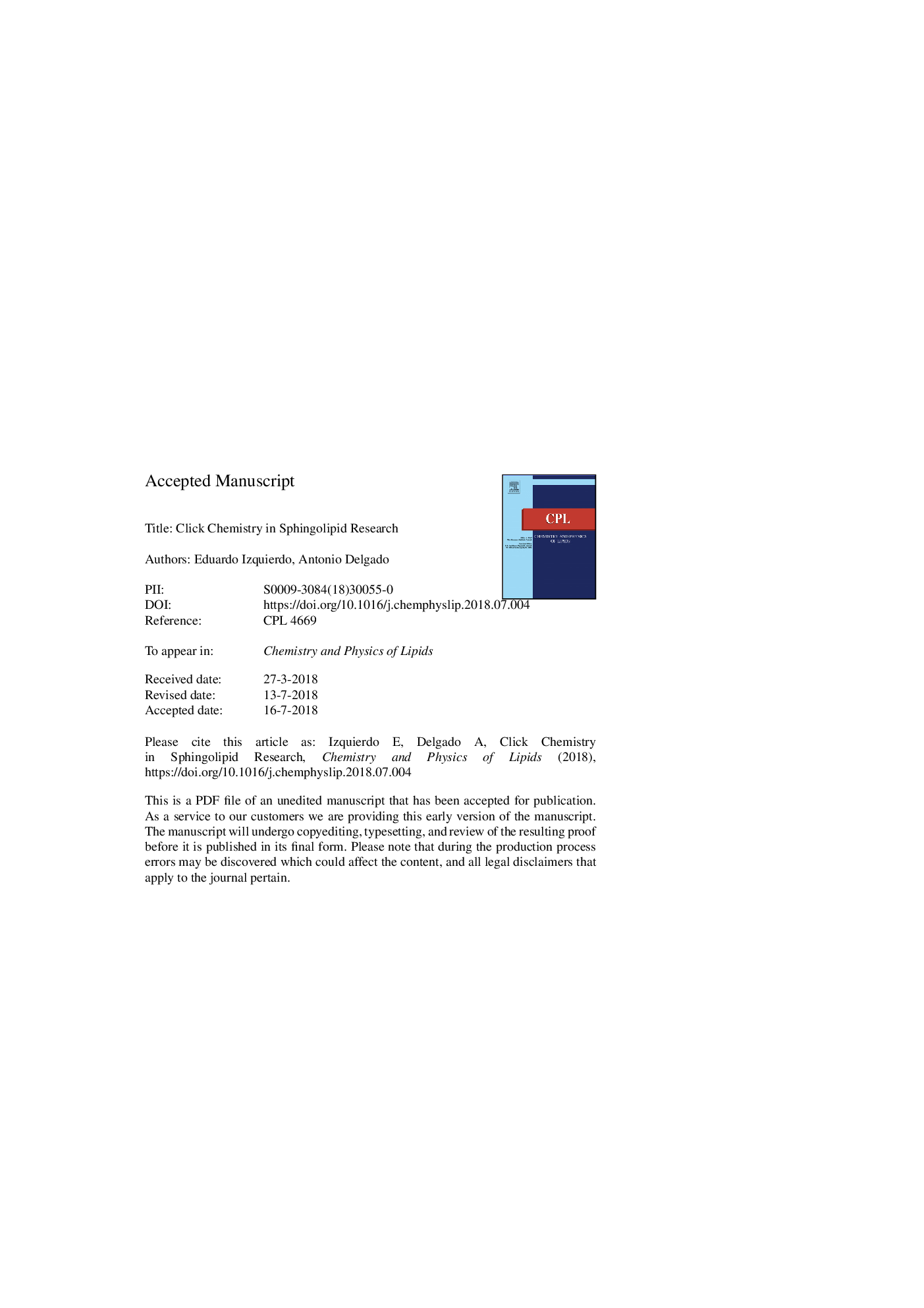| Article ID | Journal | Published Year | Pages | File Type |
|---|---|---|---|---|
| 7692038 | Chemistry and Physics of Lipids | 2018 | 42 Pages |
Abstract
The term “click chemistry” was firstly coined by K. B. Sharpless in 2001 to refer to reactions that are high yielding, wide in scope, produce only easily removable byproducts and are stereospecific and simple to perform. Since then, this concept has been further developed and a large number of chemical reactions that fulfil totally or partially these criteria have been identified, contributing to widen the structural diversity in drug discovery campaigns, and providing chemical biologists with invaluable tools for the development of bioorthogonal reactions. In this context, several examples of the application of this concept in glycobiology and in the study of protein-protein, protein-nucleic acid and even protein-lipid interactions can be found. However, far fewer protocols have been described for the interrogation of cellular processes related to sphingolipid functions and metabolism. This review seeks to provide a concise overview of the most recent additions of click chemistry strategies to the current chemical biology toolbox, including the use of sphingolipid probes suitably functionalized for in situ click reactions, and the preparation of novel sphingolipid analogues whose design has been driven by the versatility of the archetypal [3â¯+â¯2] azide-alkyne cycloaddition.
Related Topics
Physical Sciences and Engineering
Chemistry
Chemistry (General)
Authors
Eduardo Izquierdo, Antonio Delgado,
